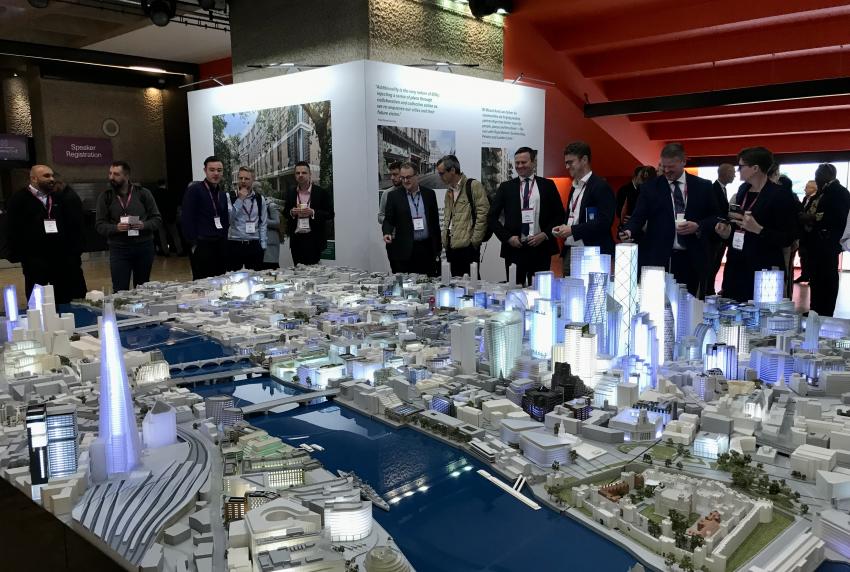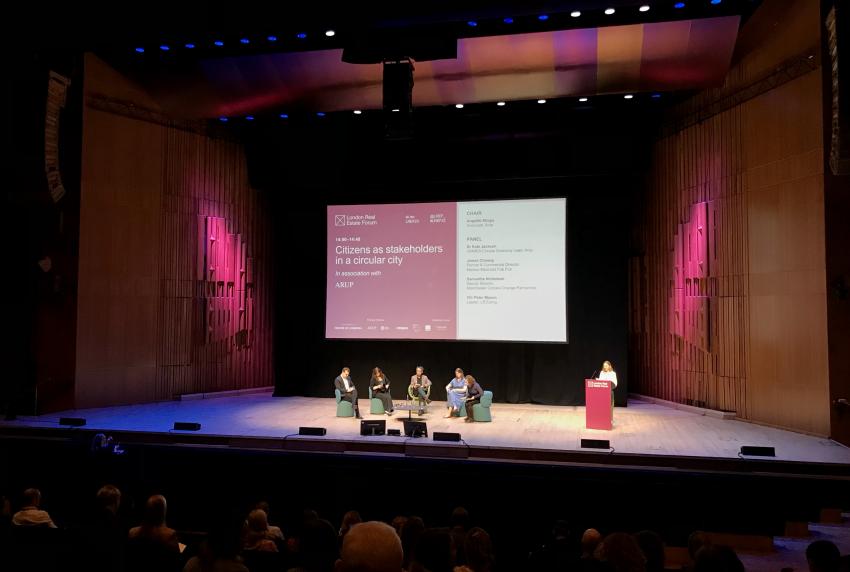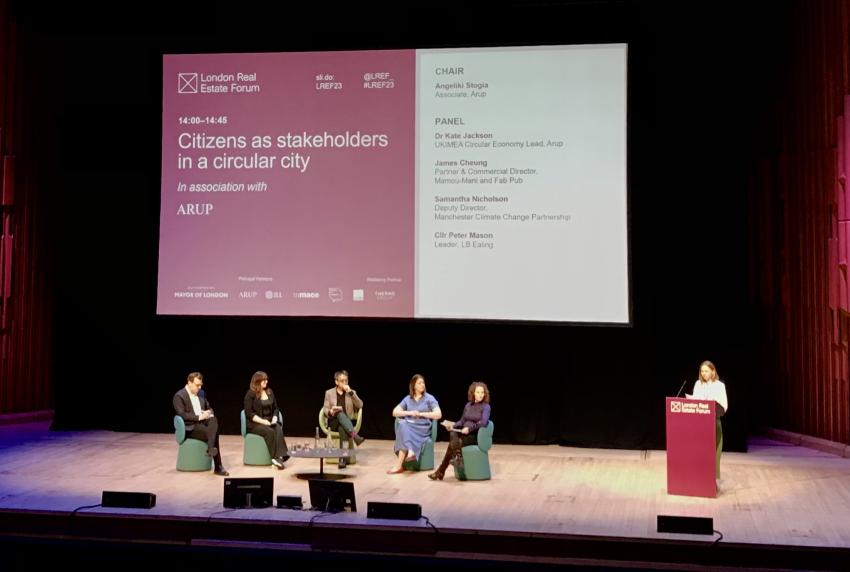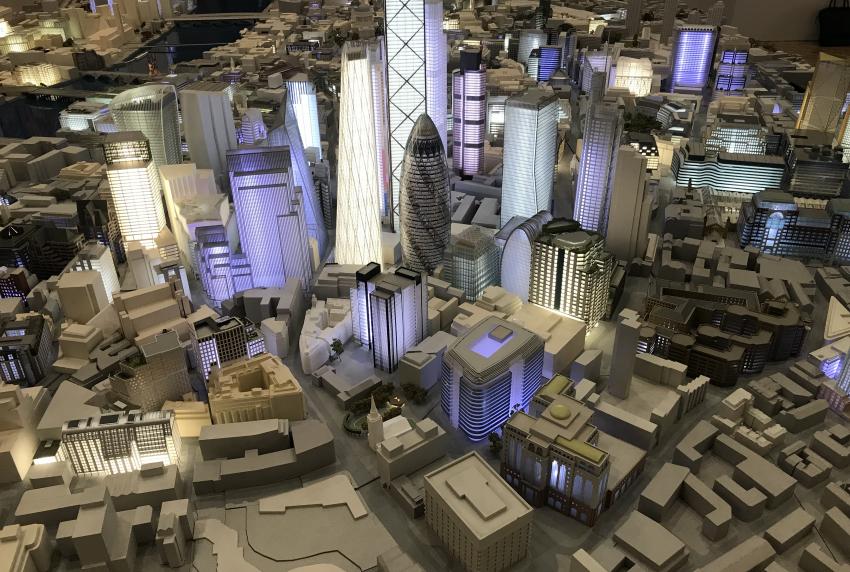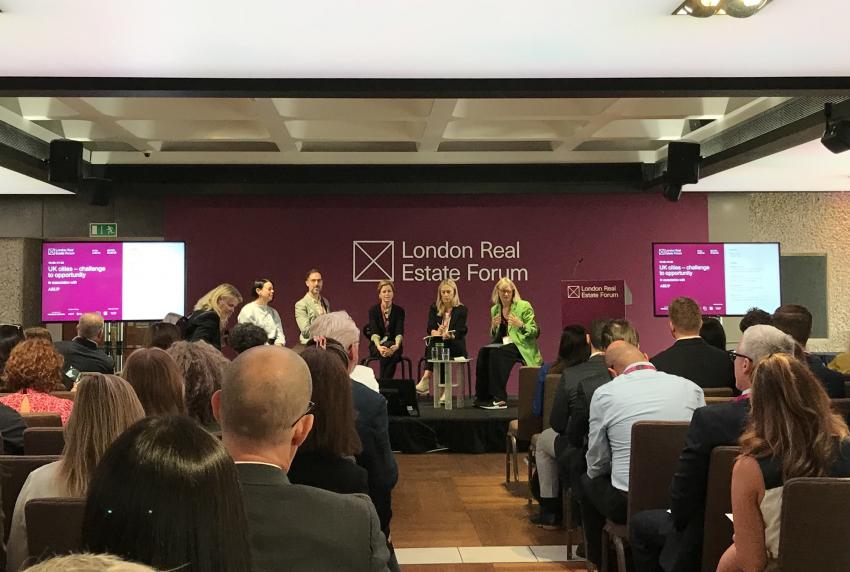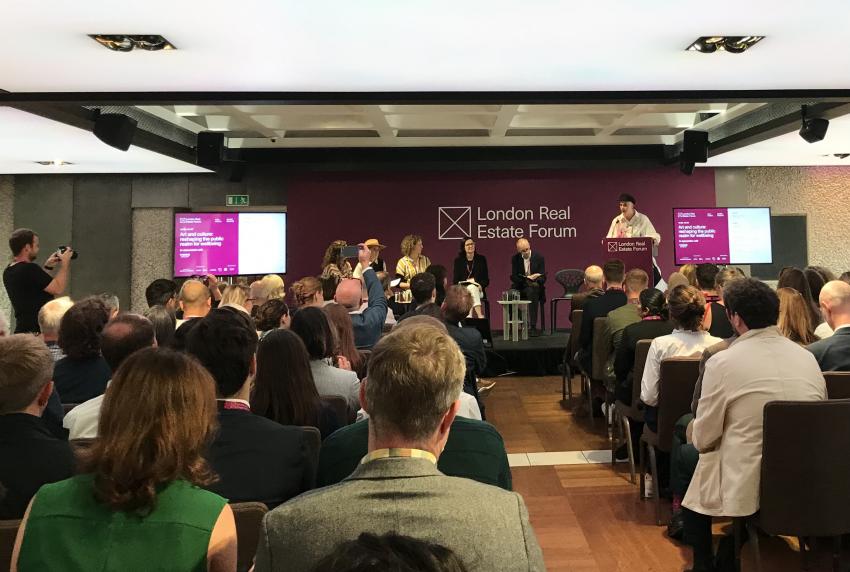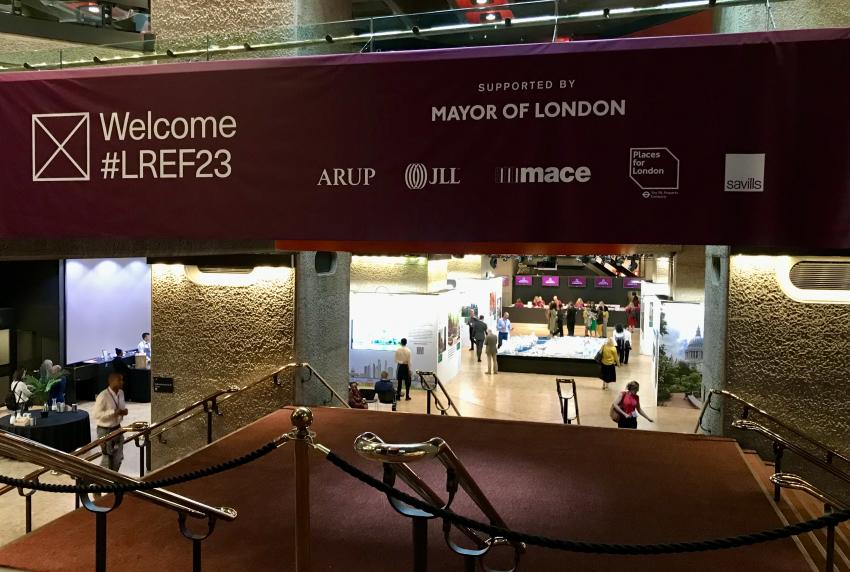Sector leaders share perspectives on improving cities for all
This year’s London Real Estate Forum (LREF) focused on the idea of value, an especially timely topic given the current pressures of rising costs combined with the need to meet sustainability and net zero targets. On 28th September, conference organisers New London Architecture (NLA) presented sessions across the Barbican Centre that brought together leaders from the industry, public sector, government, investment and business communities to look beyond obvious measures of monetary value and explore the added value created by supporting the environmental, economic and social wellbeing of workers and citizens. Benjamin O'Connor, NLA director, stated: "By bringing together diverse perspectives, we can facilitate an inclusive dialogue that acknowledges the ever-evolving needs of a diverse population."
Challenges & opportunities
The session ‘UK cities – challenge to opportunity’, presented in association with Tenderstream member Arup, investigated how creative thinking and innovation can tackle the unique challenges cities face in order to generate value for all. Debbie Jackson, executive director of growth, planning and housing at Westminster Council, gave her perspective on the many social, economic and political layers that make up a city, which can lead to resilience but also create challenges in maintaining sustainability, quality and wellbeing. One recent success that tackled the ongoing problem of high street decline is the Meanwhile project in Oxford Street, which attracted over 800 applicants in a scheme to repurpose empty retail units by giving new brands an opportunity to showcase their products.
Continuing on the theme of changing use, Rob McNicol, assistant director of policy and strategy at the City of London Corporation, described the policy measures currently transforming the Square Mile into a welcoming destination for leisure and recreation. The Migration Museum, the Museum of London and the free-to-visit viewing galleries at the 22 Bishopsgate and 8 Bishopsgate towers - designed by Tenderstream members PLP Architecture and WilkinsonEyre respectively – are intended to open up the area to visitors, moving its reputation beyond a place reserved for business activities.
In the residential sector, increased demands lead to pressures on existing infrastructure. Becca Heron, strategic director of growth and development at Manchester City Council, highlighted the need for better infrastructure to be considered right at the beginning of planning in order to realise the benefits of the city’s post-pandemic growth. The largest regeneration scheme ever seen in Manchester, Victoria North, will provide 15,000 homes alongside schools, healthcare facilities, and 46 ha of parkland.
Arts & culture
The following session, ‘Arts and Culture: reshaping the public realm for wellbeing’, explored how culture humanises the built environment and revitalises public space. Laia Gasch, director of the World Cities Culture Forum - which brings together policy makers in 38 key cities to share research and intelligence – explained that Helsinki City Library is now known as the city’s living room, where in addition to books, citizens can borrow and use musical instruments, sewing machines and even access kitchens to cook meals they can take home. Tenderstream published the contest for innovative project back in 2011, with the completed library now welcoming 4000 visitors per day.
Minna Arve, mayor of Turku, Finland, mentioned a more recent design competition, which Tenderstream sent out to our members earlier this year. The Museum of the Past and the Future will strengthen Turku’s urban appeal and produce positive effects for citizens - a recent study by the Finnish Museum Association found that 99 percent of the respondents felt that their well-being increased as a result of museum visits.
James Mark, chief strategy officer at Therme Group UK, emphasised the importance of measuring cultural value, which is especially significant as we move beyond the idea of maximising GDP at any cost, and instead judge an economy on how effectively it increases wellbeing. To back this up, Catherine Howe, architect at Ealing Council’s principal regeneration office, revealed that children are three times more likely to go into higher education if they have previously had the opportunity to engage in cultural activities.
Citizens as stakeholders
Angeliki Stogia, associate at Arup, chaired the session ‘citizens as stakeholders in a circular city’ to examine how communities can be better enabled to participate in sustainability initiatives. One of the barriers to engagement was identified as the simple one of terminology. People need clear explanations, as giving a practical example of reuse is more relatable than immediately referring to the circular economy. Councillor Peter Mason, leader of the London borough of Ealing, pointed out that it also needs to be practical for people to take part. If measures like recycling are too difficult and imposed on a population, there is a risk that they can become unpopular and be used as a wedge issue in elections.
Dr Kate Jackson, Arup circular economy lead for the UK, India, Middle East and Africa, echoed the earlier session by talking about the way challenges can also be seen as opportunities. She said that although it is daunting that only 7.5% of materials are recycled in construction, the 92.5% left to be reused in fact represents an untapped resource as we move from a consumption economy that discards waste, towards a less linear approach where reuse and recycling become more significant.
Janes Cheung, partner & commercial director of digital fabrication and material experts Fab.Pub, gave a compelling overview of how technological innovation offers an opportunity to overcome many of the barriers on the path to sustainability. Fab.Pub develop new materials, including sugar cane starch which is used in 3D printing. In terms of the built environment, the ambitious idea is to enable a modern ‘return to the age of the master builders’, where a 3D printing factory is shipped to an area engaged in a building project in a process that utilises local designers, labourers and materials to complete the 3D print and construction.
The value of discussion
We only scratched the surface of the topics up for discussion, focusing on sessions featuring Tenderstream members and their work, as well as projects resulting from our previously published tenders. But from what we heard, it became clear that although delegates may have been approaching the topic from diverse perspectives, they related similar experiences when talking about the challenges and opportunities they face delivering value for city inhabitants in a world with shifting priorities. The Barbican venue itself - a complex structure emblematic of the time when it was built, but still being reused and adapted to fit current needs - seemed a microcosm of the layered and changing city all around it, where both the positive and negatives of past planning decisions meet new priorities as planners, developers, manufacturers, architects and builders seek to define and deliver value for today's city and its future needs.
Lucy Nordberg
Tenderstream Head of Research
Tenderstream business intelligence service brings you the very latest project opportunities from around the globe. It is currently the only project leads service available that is both entirely global and specific to architecture. Start your free trial here or email our team directly at customerservices@tenderstream.com
